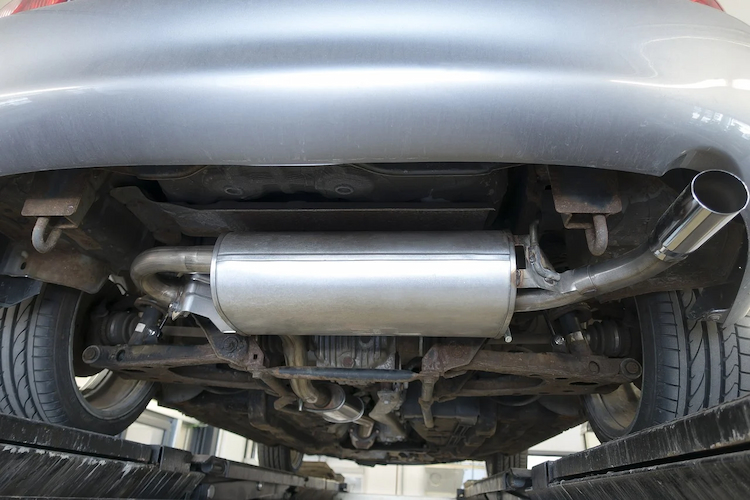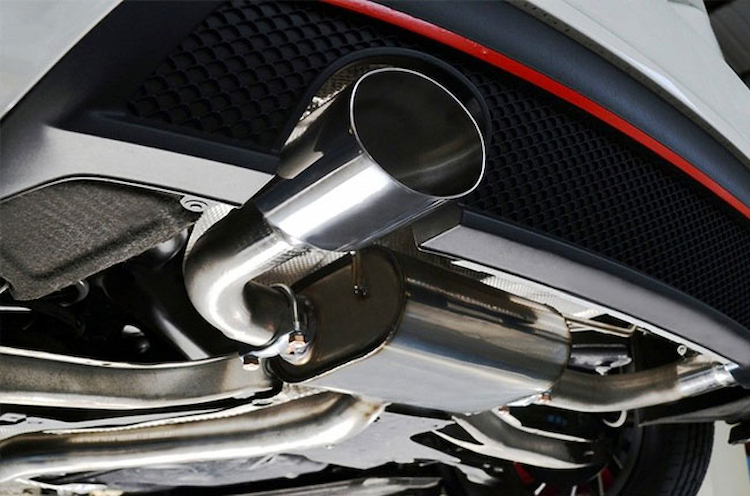If you’re looking for a bit more push and shove from your daily driver, there are hundreds of performance upgrades to get you there. Most work in tandem or when paired with a host of other upgrades, meaning you’ll be shelling out a fair sum to get the expected results. Some, like aftermarket exhausts, though are completely fine on their own, and often the building blocks for any work done later on.
To get more power, airflow is a key component. This means pushing more air in for intake, and expelling spent gases out the exhaust faster. Fortunately, complete air intake and exhaust systems can be had for much less than say when changing out the engine internals. An integral component of any self-respecting exhaust is the muffler. This has the main purpose of quietening the pressure waves in each engine cycle, as well as taming emissions so they comply with current regulations. There are hundreds of types to choose from, ranging from direct OE replacements that do much of the same as your factory exhaust when new, or reworked upgrades in the form of a performance muffler.
Muffler Basics

source: jdpower.com
Modern exhausts are modular designs, meaning any part you don’t like, including the muffler, can easily be swapped out while still working with the rest of the piping. Mufflers are simple, yet effective sound-deadening devices consisting of a series of inner tubes and chambers and outer casing to drone out excessive sound. Without one, the deafening engine noise would make driving any car almost unbearable.
This functions with parts like catalytic converters and particle filters to null toxic substances and ensure the car is roadworthy by ticking all pink-slip requirements. Most buyers though choose to change the mufflers and accompanying resonators to fine-tune the sound leaving the tips. Each exhaust and muffler manufacturer has their own signature sound, that may or may not work with your car. The good news though is they all have defined product lines, meaning mufflers that can completely drone out all sound for a whisper-quiet ride. Or get more growl and roar from a car and engine that deserves it.
How They’re Built
Mufflers aren’t necessarily complicated, but different designs go about deadening pressure waves in slightly different ways. All have one or several inlet valves (depending on the engine configuration and matching piping) and this connects the mid-section exhaust tube(s) with the rest of the assembly. Inside you’ll find a number of perforated tubes to alter the intensity of sound waves, and an accompanying resonator to cancel out remnant sound. A single or twin outlet valve connects to end pipes and tips. There are of course different variations of this basic design, differing in how they deal with sound, and how loud or quiet the car gets.
Muffler Types

source: autodeal.com.ph
Sound profiles can be altered with the right muffler type. Here buyers can choose from straight-through, chambered and turbo mufflers:
- Straight-through designs are also called ‘glass packs’ and have perforated tubing inside (with varying hole count and size). This can further be lined with sound-deadening material, usually made of fibreglass. The layout is compact, easy to fit, and retains more of the engine sound, so more in line with high-performance vehicles. Additionally, straight-through mufflers resolve issues with remnant backpressure and therefore increase the speed with which exhaust gases leave the tips. This is what most of us think of when specifying a performance muffler.
- Chambered mufflers go about sound-deadening with a series of inner chambers in different lengths and diameters, effectively increasing the path of gases while they’re robbed of their decibels. Sounds can range from loud, deep and throaty to something more mellow and quieter, depending on how the individual chambers are configured.
- Turbo types are usually with S-shaped inner tubing, and the best in droning out excess sound. If you want something quieter, then this is the type to get. The additional use of more sound-deadening fibres wrapping the perforated tubes further reduces exhaust loudness.
Why Materials Matter
Mufflers can also be categorised according to the materials that go into their construction, leading to varying durability, weight and prices. Those with aluminised outer shells are often cheaper and lighter, and do a decent job in everyday driving, with the aluminium layer performing well against water and road debris. The downside though is the lower strength, so more susceptibility to dents and rupturing, rendering the muffler useless. Moreover, once the protective layer wears out (most often due to high heat), the mild steel underneath can rust.
Stainless steel varieties cost a few dollars more, but you get your money’s worth. The material is much stronger, withstands impact and heat much better and keeps its good looks longer. And there’s no major weight penalty that affects real-world performance. This is what to get if you’re harder on the car, say when pushing it to its limits on a track, or daily traversing wet and potholed roads.
Summing Up
Mufflers are essential in every exhaust system and deal with the noise the engine produces. If you’re looking for a replacement to one that’s been damaged or a design more in tune with any modifications, then different types and layouts producing different sounds are available from a range of exhaust and specialist muffler builders. Prices are reasonable for what they offer – an exhaust note you like paired with a bit more performance. Just ensure you get what fits with the car in terms of available space and inlet/outlet configurations and have it fitted by a pro for the best results.

